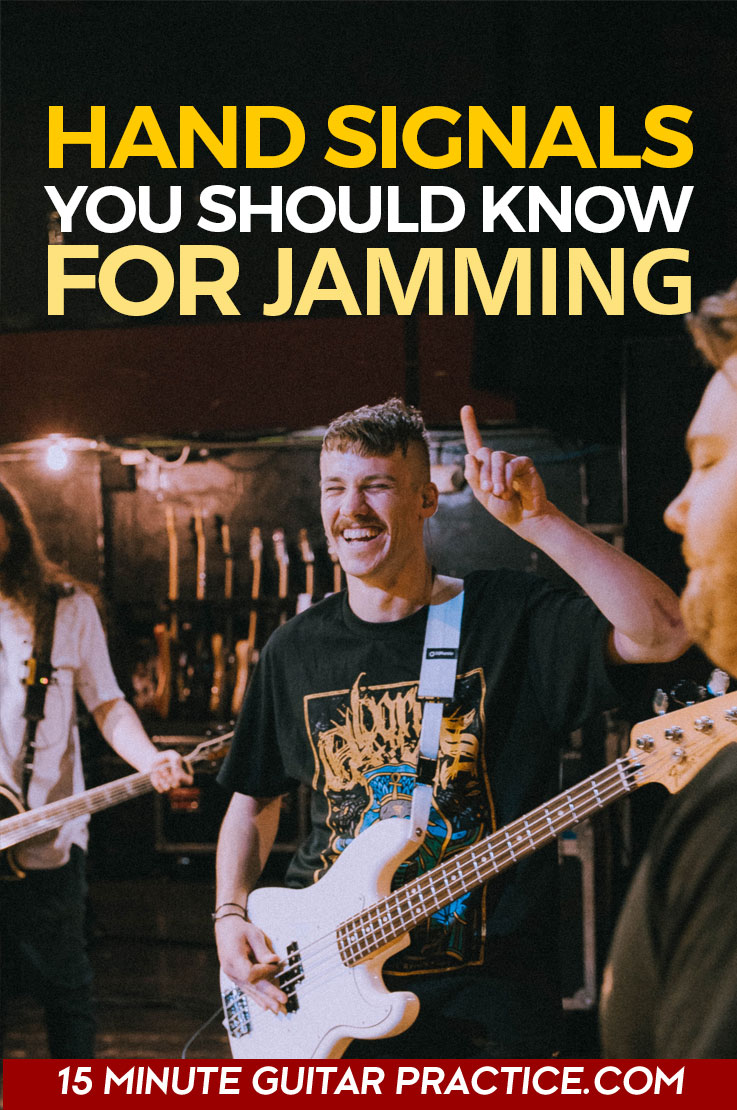Ever wondered how musos at jams communicate with eachother in the moment? If they are strangers, how do they all know to do that stop in verse 1, or when to get really quiet, or what if one of them is crazy loud and needs to turn down? Is it just instinct or is there something else going on? This guide should clear things up.
Ok, spoiler alert. There is something else going on (but I think you got that, right?)
There’s a whole bunch of unwritten gestures that musicians enact with their hands and sometimes their face to control tempo, key, volume, stops, breakdowns, solos and many other variables in a song. Some are obvious while you’d miss if you blinked. (like Jimi changing pickups or SRV tweaking his volume pot.)
who to watch
When you’re onstage at a jam, the person to watch is usually the singer as they guide the count in, dictate the order of the solos and signal the end of the song.
Below is a not so exhaustive guide of the signals you may encounter.
NB: Many of these are context based so where in the song’s timeline you see them is as important as what they are. And some have two (or more) meanings depending on whereabouts in the timeline they are.
HAND SIGNALS
Making fast circles with finger “speed up the tempo, its dragging”
Pushing both hands towards the ground repeatedly “get really quiet here”
Fingers on lips “get quiet here”
Hands palm up lifting towards the sky “get louder”
Fist held up then pulled down abruptly so elbow at is right angle “stop”, usually dictates end of song and fist is pulled down at stop point. Based on military stop signal.
Hand slicing motion across neck “cut it / end it here” usually seen if there’s a problem.
Twisting hand (like turning a dial) or pointing up “turn up, I can’t hear you”
Squint/frown and pointing down “you’re too loud, turn down”
Touching your head “back to the head” (main or opening melody of the tune)
Circling finger then showing 3 fingers “repeated the phrase 3 times then end”. A common way to end a song live.
3 fingers “move to the iii chord” (usually accompanied by mouthing this message)
4 fingers “move to the IV chord”
5 fingers “move to the V chord”
FACIAL EXPRESSIONS
Subtle shake of head “nope, its not this time” Usual seen if the band leader knows the song better than you and can see you’re about to change too soon.
Nod towards you and eyebrow lift “yep, your turn to solo”
Big lift of head and bringing it back down abruptly “stop/end here”
Repeated nods “yes, continue your solo for another round”
INSTRUMENT GESTURES
Tilting neck of guitar upward then bringing it down fast to be horizontal “Stop here” (usually enacted by singer/guitarists who are unable to turn around to the drummer due to singing in to the mic.)
BoDY LANGUAGE
Moving towards the mic “I’m about to sing” (a clear signal to return to the verse figure, so end your solo and don’t play over the singer)
Pointing to you “Your turn to play a solo”
Key indication signals
Not used so much by guitarists (because most of us use words) but other muscians and particularly those of the jazzier persuasion e.g. pianists or horn players will use a number of fingers pointed up or down to indicate keys. Of course this is no good to you if you don’t know your sharps and flats in a key.
1 finger up = key with 1 sharp = G Major
2 fingers up = key with 2 sharps = D major
3 fingers up = key with 3 sharps = A major
1 finger down = key with 1 flat = F major
2 fingers down = key with 2 flats = Bb major
3 fingers down = key with 3 flats = Eb major
,
